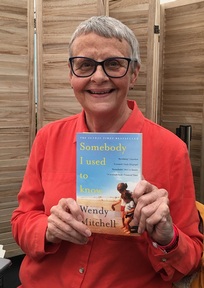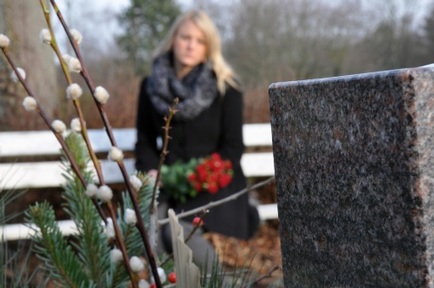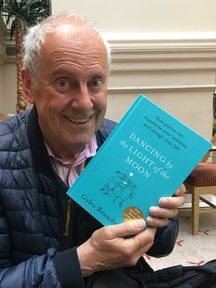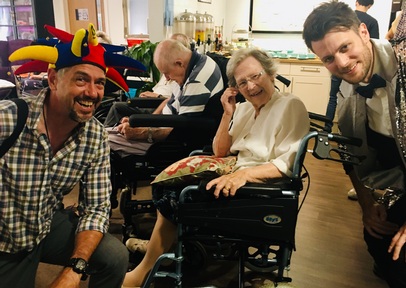Care home lifestyle: tackling the stereotypes
While personalised methods of care have done much to combat images of older people sitting around all day looking bored, with nothing to do but watch television, such negative stereotypes of life in residential care remain a challenge to providers seeking to earn a more positive reflection on their homes.

No doubt we’ve all heard views on care environments as representing a loss of personal freedoms despite the fact that, these days, care homes have activity co-ordinators in place whose very role is to make sure interests and hobbies are supported, while social entertainments and outings are always on the calendar.
In training
Care assistant Suzie Murray of Amherst Court, in Chatham, describes a mixture of excitement and nerves, when she knew she would be starting work, particularly on this issue of making sure residents can make the most of their time.
She comments, “When I was accepted as a care services assistant I was over the moon, but at the same time I was nervous as I had never worked with elderly people before let alone elderly people living with dementia. I had so many different thoughts going through my head. Would they like me? How do you behave around them? What sort of things am I going to have to do and being honest the thing that scared me the most was the personal care? Would I be able to give these people the care that they needed?”
A robust training programme, however, ensured that Suzie was well prepared in getting to know each resident, aware that time and effort would be required to appreciate their individual perspective. She says, “The hardest thing I found was learning everyone’s name. Then there was learning all of the social history and the likes and dislikes and hobbies for every resident. I have been on training courses whilst being with Avante Care & Support which have helped me progress in my job role and have a better understanding of the people I care for.”
She continues, “I have learnt that care home residents don’t just spend their time in front of the TV drinking tea and eating biscuits – well the residents at Amherst Court certainly don’t anyway! They go out and do things like any other person would. Since my time with Avante Care and Support, I have been to a community centre and made Christmas cards and have been to B&Q to make wooden bird boxes. There is a lot of singing and dancing and I have realised I can’t do either of them but it makes the residents happy and that’s all that matters.”
Watching TV
Conversely, it is also possible for care homes to make the most of stereotypes as well as defeating them, which is exactly what Hallmark Bucklesham Grange, in Ipswich, has done.

Although watching television is not a lone, or even a leading activity that residents partake in, it’s hardly inconceivable that many of us, old and young alike, will spend a certain amount of time in front of the TV at this time of the year, when cold winter nights enhance the desirability of a warm social environment and putting one’s feet up.
According to Hallmark Luxury Care Homes lifestyle team leader, Kirsty Thomas, the preference within their home is for musical concerts and shows, while some residents “continue to watch programmes which interest them such as crime dramas and soaps. I believe, for some, this helps add a sense of ‘home’ to their rooms as it brings normality and routine.”
An in-house cinema, complete with Sky package, has also served to offer more choice. Ms Thomas continues, “The Sky package in our cinema has benefitted us by making a larger variety of films available and enabling us to show sporting events such as football games, which is nice for those who enjoy sports but in particular for those who follow a team.
PJ Care Ltd is another provider that has utilised a Sky package to great effect. They comment, “Having Sky TV and Wi-Fi in our care home has helped residents keep up-to-date with all their favourite TV programmes and keep in touch with family and friends. It’s made a real difference to the personalised care we offer.”
So as long as TV isn’t used as a ‘be all and end all’ there is no reason it can’t also be a useful tool in enhancing lives. As Ms Thomas describes, “A small selection of television programmes support a relaxing atmosphere such as wildlife documentaries and music concerts. However, many others can be too ‘noisy’, destructive and create the wrong environment – such as tabloid talk shows. We discourage the television being on unless someone is watching a specific programme or has requested it on, we find music can have a much better effect and create a more relaxed, positive and engaging environment.”
Although there are some exceptions, such as Remembrance Day, which is an example of a large televised event that “brings a community together to watch as a group”.
Modern services
So, hollow lifestyles really are far from the norm within a sector that has become increasingly astute and proactive over the last decade; something that is reflected, not merely in care practice, but also in the attitudes of residents themselves.

More and more care homes are looking to help their residents learn more about, and make the most of, modern technology, getting them in touch with social media and connecting software like Skype.
Acer Court Care Home - Avery Healthcare, in Nottingham, for example, where recreational and leisure coordinator, Claire Harne, reports, residents have been far from hesitant in embracing new IT potential, saying, “Quite the reverse; they can’t wait to get started. Our residents don’t need us to explain what they can do, only how to make it happen. They’ve embraced it completely.”
Commenting further on the benefits residents have experienced, she says: “It is important that they know their mums and dads are being looked after and keeping active. One person even wrote that they never thought they would be stalking their Nan via Facebook.”
Avery marketing manager, Angus Matthews, adds: “We want to show an authentic view of our home, which is what social media and sharing provides. Communication flows both ways, so residents can message about the quality of life at our homes, and families can see exactly what activities they have been up to. We also use social media to share knowledge amongst the staff at all 32 of our homes, so that everyone sees the great work of our recreational and leisure staff.”
Latest Features News
 25-Nov-19
2019 Election: Boris Johnson leaves social care in 'too difficult box' but Labour vows to end 'crisis'
25-Nov-19
2019 Election: Boris Johnson leaves social care in 'too difficult box' but Labour vows to end 'crisis'
 18-Oct-19
Podcast: Wendy Mitchell and dementia: 'My biggest fear is not knowing who my daughters are'
18-Oct-19
Podcast: Wendy Mitchell and dementia: 'My biggest fear is not knowing who my daughters are'
 27-Sep-19
Exclusive: Care minister backs care workers' call for time off to grieve and attend funerals
27-Sep-19
Exclusive: Care minister backs care workers' call for time off to grieve and attend funerals
 19-Sep-19
Podcast: Gyles Brandreth says poetry helps ward off dementia
19-Sep-19
Podcast: Gyles Brandreth says poetry helps ward off dementia
 30-Aug-19
Edinburgh Fringe funnyman joins comics facing toughest audience at care home gig
30-Aug-19
Edinburgh Fringe funnyman joins comics facing toughest audience at care home gig